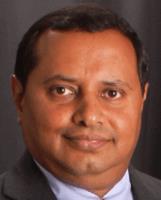Biopharma's Technology Scouts: Time To Look At CDMOs, Too?

By Louis Garguilo, Chief Editor, Outsourced Pharma

Innovation-focused biopharma positions like Ravi Kiron’s are proliferating around the globe. Here’s a more detailed look at what these jobs actually entail, and a surprising recommendation to drug sponsors regarding their widespread search for new-tech in the supply chain.
In Good Company
“As I’m getting started here, I’m looking around,” Kiron says of his new position as Head of Biopharma External Innovation at the Silicon Valley Innovation Hub, Menlo Park, California, of EMD Serono, the US Healthcare division of Merck KGaA, Darmstadt, Germany. “I see Roche Genentech has an innovation center, Becton Dickinson has an innovation hub, Deutsch Bank, and FujiFilm have them. Just to name a few.”
 Kiron’s list hints at two key developments.
Kiron’s list hints at two key developments.
First – undoubtedly as many readers know – is the growing influence innovation hubs, centers, labs and the like now exert throughout so many organizations.
Second, any industry today can become a competitor of any other industry, with most everyone going after the same bed of technologies. In our first article, for example, Kiron rattled off AI (artificial intelligence), AR (augmented reality), VR (virtual reality), nanotech, and data aggregators of all bents. [I’d add blockchain technologies to this immediate list.]
“The breadth of the opportunity is amazing,” Kiron says. “I've been in the biopharma industry 30 years – in various roles and responsibilities from academia to Big Pharma such as Pfizer and J&J. I’ve served on many biotech company management teams and been involved in various scientific, operational, business development and strategic roles. However, my role here as an ‘innovation hunter’ is something novel when compared historically. We’re literally looking for new technologies in between and beyond our own industry, those that can revolutionize the way we identify and develop novel therapeutics.”
For example, Kiron informs me that the last few days he’s heard “pitches” from various organizations providing artificial intelligence to enhance manufacturing outputs.
“The biopharma industry operates in an environment where for product development we might be experimenting with 20 different reactants and ten different conditions of temperature and humidity. It’s impossible for human beings to really understand what formulations and combinations are best; there’s just this massive amount of data generated that needs to be analyzed. But using AI, we can run through all those simulations to identify which might be the optimal combinations. This innovation is happening today, in real time. It's now a matter of being able to apply it to what we do on a routine basis.”
Ravi And The Scouts
To find these new innovative gems, Merck KGaA, Darmstadt, Germany has created the position of “technology scout,” first employed at the company’s headquarters in Germany, and subsequently at its R&D location in Billerica, Massachusetts. The company is also expanding innovation hubs in Singapore and China. And as an indication of how important this new-tech search is, at the Merck Innovation Center Complex in Darmstadt, a new building will be inaugurated as part of this year’s 350th anniversary of the founding of the Merck KGaA, Darmstadt, Germany organization. “The company has fundamentally concluded that in today’s environment, R&D needs to go hand-in-hand with innovation more broadly, and in a major way,’ says Kiron.
Now it’s his turn to hire his own band of scouts.
“I was recruited to connect with California establishments of all kinds, universities, institutions, entrepreneurs, biotech,” explains Kiron. “We are starting here and will have a broader remit to identify global entrepreneurial opportunities that can connect or speed up drug discovery, develop drug delivery parameters, or identify novel biomarkers.
Kiron adds that his organization is also looking for developing methodologies and to identify patterns for selecting patient populations for oncology clinical development. “There are so many oncology companies out there – you have to differentiate and find ways to demonstrate better efficacy, safety and functionality of your products.
“So essentially,” Kiron sums up, “we will create a team here to build an ecosystem, so we can employ out-of-the-box thinking for evaluating AI, ER and VR, and things like advanced data analytics, among other initiatives.”
Innovating Priorities
But with such an open mandate, and so much new-tech to chase down, how will Kiron prioritize? As we mentioned in part one, there are a lot of rabbit holes to look into.
Kiron replies by explaining that his focus initially is on drug discovery for oncology, immunology, immuno-oncology – his key therapeutic areas. “So that's one priority checkpoint,” he says. “Next is to see how we can support compounds in development. We have a number of phase 2 and 3 candidates, and for example, we’ll look to find new approaches to diagnostics – companion diagnostics – to support their development.
“We will also search for methods to enhance understanding of combination drugs and trials,” Kiron continues. “Are there advanced methodologies for reviewing all the data that needs to be generated throughout the process? Are there analytics to help us understand that data better, so that when we go to the agency and present a combination trial it’s not just the 25th combination trial they’ve looked at, but it's something exceptional that gives them a way to understand why and how the drug could be effective.”
Funding And CDMOs
Of course once novel technologies are identified, organizations must come up with the funding to gain access to them, and support their development and application. And – surprise – this is where we directly move to our specific focus on working with CDMOs and other service providers.
What if more of these new-tech ideas for innovation in process and product advancements come from contract organizations that drug owners are already working with?
Put it this way: Any “technology scout” will have an easier time on-boarding a technology that a CDMO already knows how to apply to that organization’s products and pipeline, than trying to import from an academic or other source (potentially outside the biopharma sphere altogether).
We’ve heard dozens of stories about how service providers – working to stay technology competitive themselves – bring ideas for innovations to biopharma clients, but get rebuked because of the immediate focus on the bottom line for services. Perhaps sponsors should make a new comparison: Where is innovation actually cheaper to come by? On the one hand, sponsors say they’d like more innovation from their CDMOs, but on the other, they might actually be limiting it with the wrong cost-benefit analysis.
So perhaps when his scouting ecosystem is fully operational, Kiron should direct his band of technology scouts to also dig around in the labs, plants and hallways of the CROs and CDMOs. In fact, all sponsors may discover this: innovative, biopharma-applicable new-tech, perhaps already focused on elements of a drug owner’s pipeline, will require less funding, developing, human resources and time than potential innovations from other sources.
But that must raise this final question: Are today’s service providers in fact locations for new-tech and innovation discovery? We’ll check back with Kiron in the near future for some answers.
